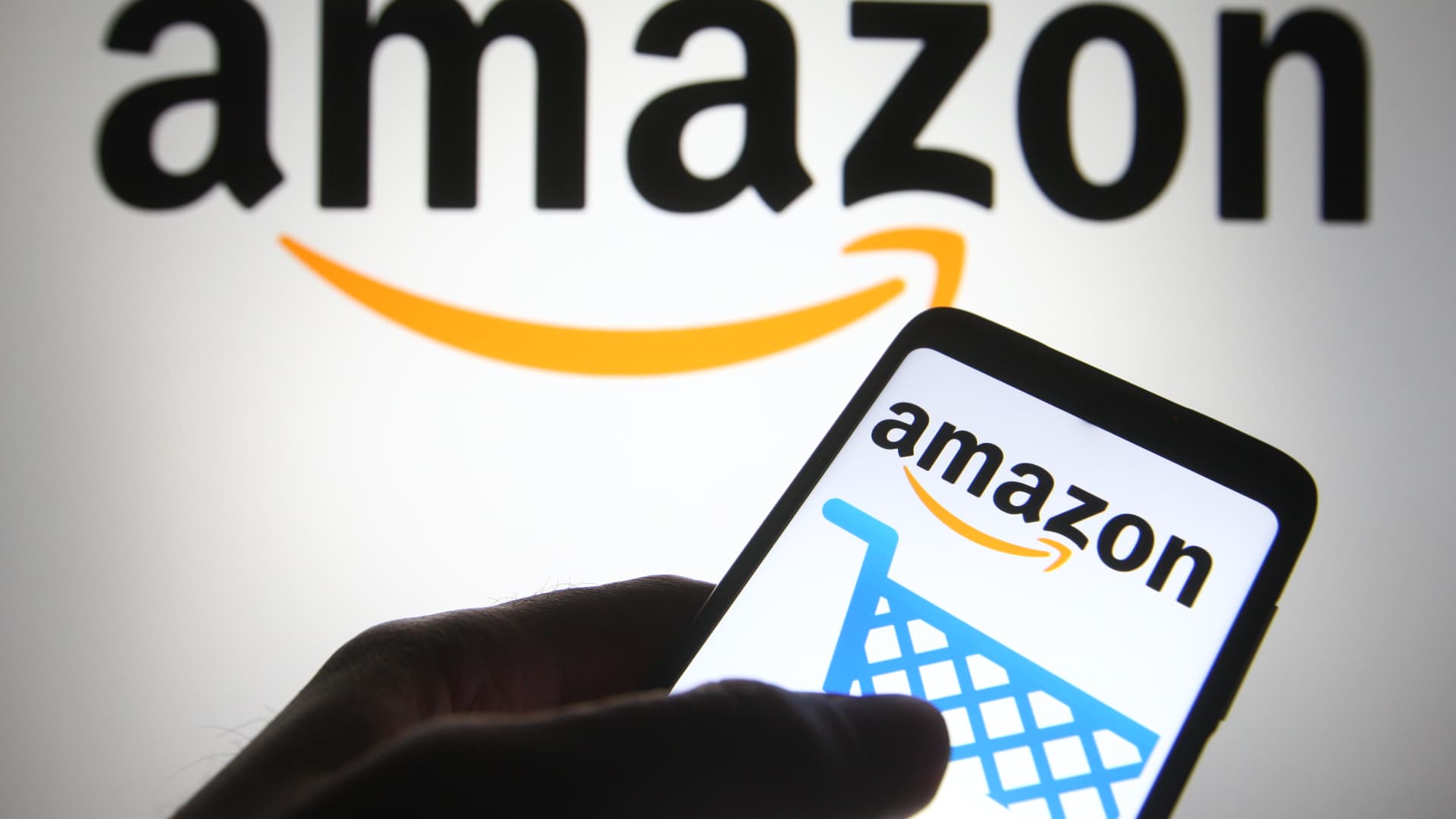Social media giants Meta and Snap are telling investors that the online advertising market is experiencing some turbulence due to the economic slowdown. Amazon is sending a very different message.
While the bulk of its business comes from e-commerce and cloud computing, Amazon has built a robust online ad division by getting brands to pay big bucks to promote their products on the company’s website and app.
As of late last year, Amazon commanded 14.6% of the U.S. digital ad market, third to Google at 26.4% and Facebook at 24.1%, according to Insider Intelligence.
In the second quarter, Amazon grew faster than either of its larger peers in the market and also beat out the rest of the major players. Amazon’s ad revenue rose 18% from a year earlier to $8.76 billion, topping analysts’ expectations and underscoring the unit’s rapid ascent and increasing importance to brands.
By contrast, Facebook’s ad business shrank for the first time ever, missing analyst estimates, and the company forecast a second consecutive decline in revenue in the current period.
Here are the growth rates in descending order for the top online ad platforms.
- Amazon — 18%
- Snap — 13%
- Google — 12%
- Pinterest — 9%
- Twitter — 2%
- Facebook — (1.5%)
It wasn’t just the social media companies calling out the challenging ad environment. Streaming service Roku reported disappointing second-quarter results and said in a shareholder letter that the current ad market is reminiscent of the onset of the Covid-19 pandemic, “when marketers prepared for macro uncertainties by quickly reducing ad spend across all platforms.”
Meanwhile, Amazon provided a level of reassurance to Wall Street in giving guidance for revenue growth in the third quarter of 13% to 17%. That’s going to be a boon for the ad division, because “the ads business goes as the commerce business goes,” said Andrew Lipsman, an analyst at Insider Intelligence.
“Long term I think Amazon is building an absolute advertising juggernaut,” Lipsman said. “That engine is going to become transformative to advertising.”
Amazon has a distinct advantage over several of the social media platforms that have struggled of late. In 2021, Apple’s iOS privacy change made it harder for ad-supported sites to track users, a move that’s had an outsized impact on Facebook and Snap. Amazon, by contrast, is its own separate silo, where advertisers go directly to build campaigns.
Lipsman said that companies concerned about a potential recession are allocating more of their ad budgets to places like Amazon, where they can more likely see a return on their investment.
“It’s a flight to safety for ad dollars right now, and that safety is when you can show measurable returns on ad spend,” Lipsman said.
The prospect of ads leading to direct sales is guiding much of Pinterest’s current strategy. The company is investing heavily in e-commerce and recently landed former Google commerce lead Bill Ready as its new CEO, succeeding co-founder Ben Silbermann.
Justin Patterson, an analyst at KeyBanc Capital Markets, said there are signs that Pinterest is seeing some success in e-commerce and that its “algorithms helping people discover contact or discover items on Pinterest to shop also continue to improve.”
Pinterest’s revenue slightly missed analyst estimates and the company also issued a disappointing forecast for growth in the mid single digits. But the stock climbed 12% after activist investor Elliott Management disclosed that it’s the biggest shareholder in the company and said, “Pinterest occupies a unique position in the advertising and shopping ecosystems.”
Despite all the doom and gloom about the broader online ad market, Kate Scott-Dawkins, global director of business intelligence for media investment firm GroupM, sees plenty of reasons for optimism. Facebook parent Meta is still bringing in lots of cash, and while social media platforms aren’t experiencing the kind of booming growth they did during the pandemic, they still have the attention of top advertisers, she said.
Brand awareness is important for companies in the consumer packaged goods industry and elsewhere, regardless of the current economic environment, Scott-Dawkins said.
“We’ve heard from CPG brands in the past about the importance they place on advertising and brand advertising in recessionary times, just in terms of continuing to make sure that consumers choose their brand over a generic brand,” she said.
The big question will be whether consumers cut back on spending as the year progresses, which could have a more profound impact on company ad budgets. If that’s the case, Amazon could still pick up share, but in a market with fewer dollars to go around.
WATCH: Big tech companies paint an ugly picture of the U.S. economy.

